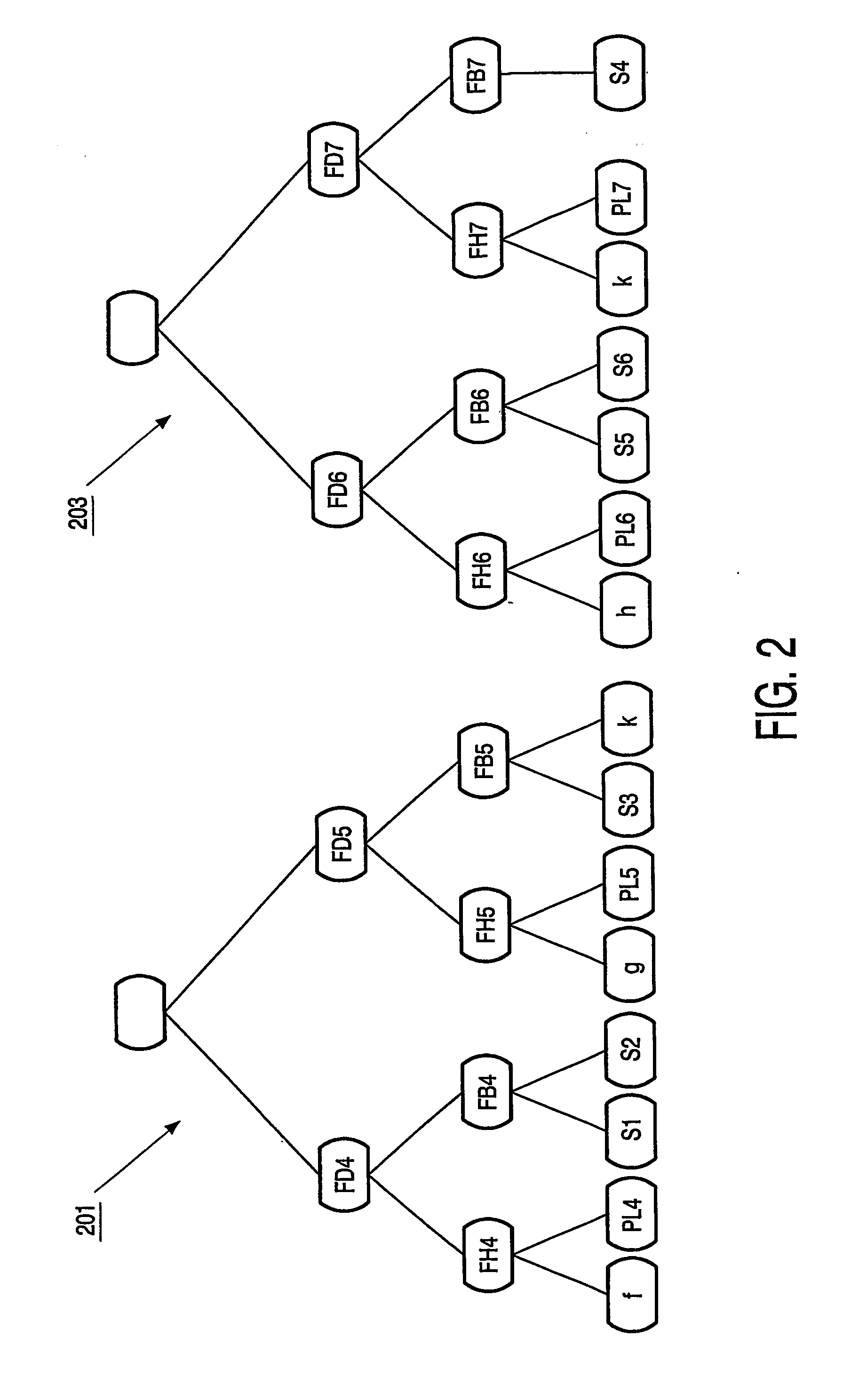Source-to-source partitioning compilation
- Summary
- Abstract
- Description
- Claims
- Application Information
AI Technical Summary
Benefits of technology
Problems solved by technology
Method used
Image
Examples
Embodiment Construction
[0029] In a first embodiment of a method of partitioning according to the invention, the user has written a program in C as a source code language, that should be partitioned in a first part to be implemented by a general-purpose processor and a second part to be implemented by a co-processor. By way of example, a fragment of the source code of the C program consists of three functions f, g and h, each having an integer as input parameter and two arbitrary statements that should be executed:
f (int x){ s1; s2;}g (int y){ s3; s4;}h (int z){ s5; s6;}
[0030] The method of partitioning is shown using above mentioned source code fragment. In a first step, the source code is translated to a plurality of Abstract Syntax Trees (AST). A plurality of abstract syntax trees represents the internal structure of a source code in abstract syntax by using a tree as data structure. An AST has nodes that are labeled with the production names, and leaves that represent the terminals ...
PUM
 Login to View More
Login to View More Abstract
Description
Claims
Application Information
 Login to View More
Login to View More - R&D
- Intellectual Property
- Life Sciences
- Materials
- Tech Scout
- Unparalleled Data Quality
- Higher Quality Content
- 60% Fewer Hallucinations
Browse by: Latest US Patents, China's latest patents, Technical Efficacy Thesaurus, Application Domain, Technology Topic, Popular Technical Reports.
© 2025 PatSnap. All rights reserved.Legal|Privacy policy|Modern Slavery Act Transparency Statement|Sitemap|About US| Contact US: help@patsnap.com



